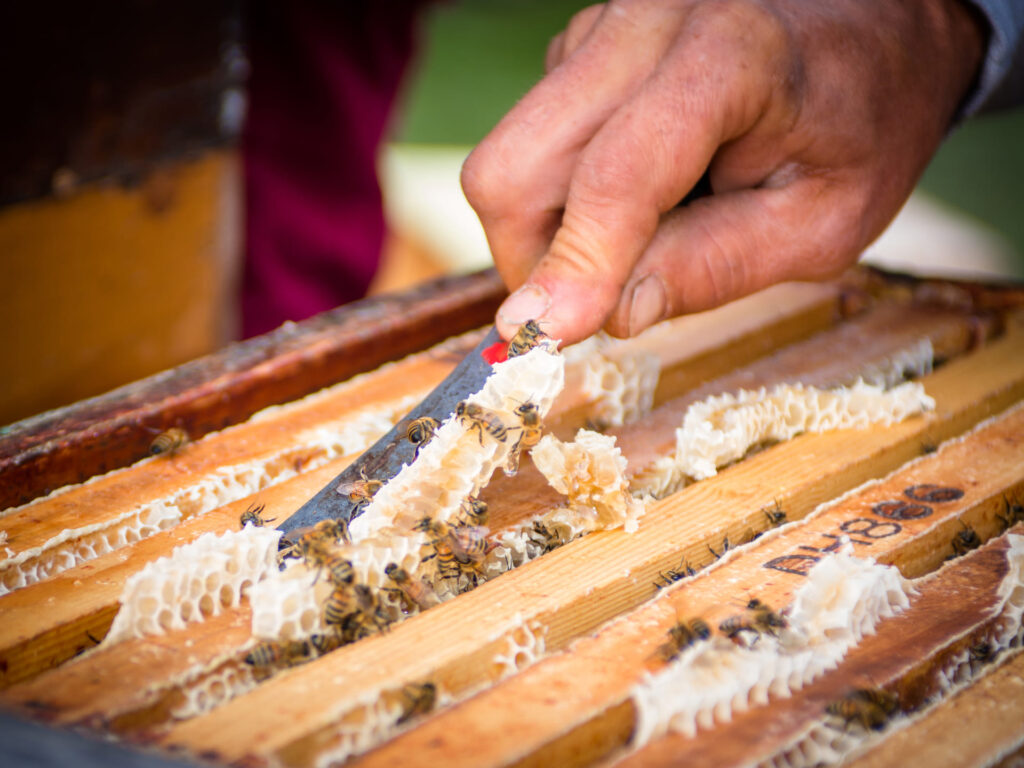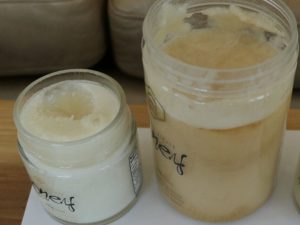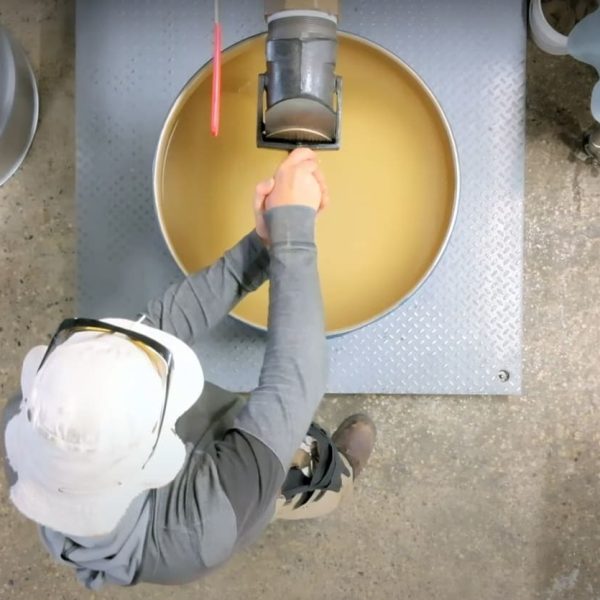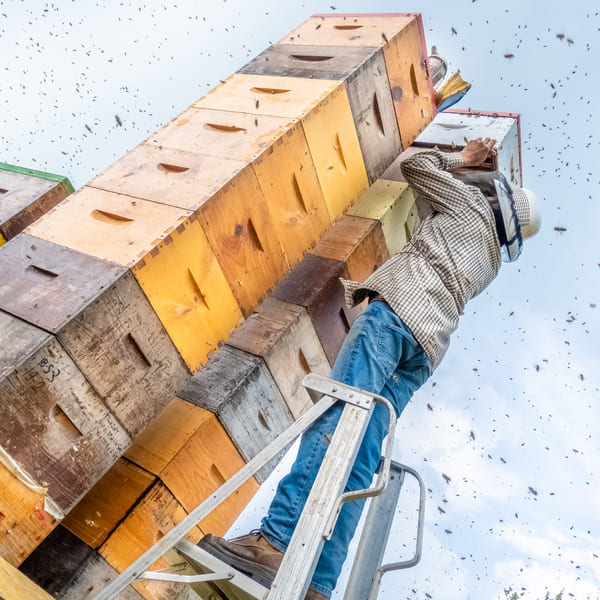
Raw Honey Loses Flavor & Health Benefits in Ambient Storage
A commonly quoted “interesting fact” about honey is that 3000-year-old honey was found in the Egyptian pyramids that was still edible. Sometimes this is even paraphrased as variations on “Even if honey had been sitting on your shelf for 2,000 years, that honey would still be as good as the day you opened it”. So very incorrect. Raw honey starts losing freshness, flavor and health properties from the day it’s produced. The degree of aging depends greatly on storage conditions and especially the heat exposure history of the honey.
The folk wisdom quoted all over the internet of honey being perfectly edible after over 3000 years appears to date back to a 1913 article in National Geographic magazine and then affirmed by the Smithsonian Magazine in 2013. Peter Borst writes in the American Bee Journal (Borst, P 2021 ‘The Honey Jar’ Vol. 161, No. 12, p. 1305) that examination of a pyramid sample of “honey” by a chemist in 1926 “found the jars to be practically empty, save for a trace of dried material stuck to the inside. Tests on the material were unable to determine the nature of the substance, other than it was not completely soluble in water, which honey would be.” In the one sample that has good evidence of being honeycomb (stored since 1350 BC), the honey is described as being reduced to a “dark brown mass”. While consuming this likely ancient honeycomb may not be toxic, it hardly sounds appetizing.
The Problem

The problem is that almost everybody, including, it seems, many raw honey brands, believes that honey will remain fresh indefinitely in a warehouse, on a store shelf, or in a kitchen cupboard. While honey is an exceptionally stable and well-preserved food naturally, it does deteriorate with age over time in ambient storage. Organic compounds tend to denature over time, usually in a manner that is highly temperature dependent. The higher the temperature, the more rapidly organic compounds denature. This means that the polyphenols, flavonoids and bee enzymes that give raw honey both its unique flavor and health benefits are slowly degrading as the raw honey languishes in ambient temperature storage. At normal room temperature, the process is relatively slow, with measurable changes occurring over weeks to months.
This entire discussion is specifically about raw honey. The concept of “freshness” cannot apply to pasteurized honey. Processed honey has had any “freshness” intentionally cooked out of it to prolong shelf life, prevent crystallization, and make it more visually appealing. Pasteurized honey doesn’t deteriorate on the store shelf like raw honey because it was actively deteriorated before reaching the shelf.
Get honey delivered fresh from our farm to your table.
Get 10% off (orders up to $110) the next time you buy our fresh raw honey online with coupon code TheFreshest
What's Wrong With Old Honey?

Most store-shelf raw honey has been purchased in bulk from producers, which means that the honey has often been sitting in a bulk drum in a warehouse for weeks, to months, or even years, aging away, before being packaged into a retail jar (a process that almost invariably requires heating the honey to some degree, even if not pasteurizing the honey). Many raw honeys then get stamped with a 2 to 5-year best before date, sitting around in ambient-temperature warehouses and then on store shelves for months. By the time the customer opens their new jar of raw honey home, it has usually aged considerably.
To be clear, aged honey is in no way harmful or hazardous. This is what the Egyptian pyramid honey speaks to: Honey is safe to eat after long-term storage in a wide range of conditions. But honey that’s been in ambient storage for many months has certainly aged. It has lost some of its original complex flavor and some of the organic compounds that confer health benefits. This has been well researched and there are laboratory tests that can quantify honey freshness. According to Dr. James Gawenis, the Chief Chemist at Sweetwater Science Labs, “The single best indicator of honey freshness is HMF (5-hydroxymethylfurfural) content. I would add a second test, diastase activity, to determine whether an elevated HMF is due to intentionally heating the honey, or to honey that has been stored for longer times at ambient temperatures.” The maximum HMF content for honey to be considered “raw” is 15mg/kg (for non-tropical honey)1. The lower the HMF content, the less the honey has deteriorated.
Fresh Raw Honey: Better Tasting; Better For You
At Wendell Estate Honey we take honey freshness very seriously. Our retail honey never sees the inside of a bulk drum: it comes in from the field, gets extracted and goes straight into the jar either the day after it comes in from the beehives, or the next working day. Once it sets into the signature smooth WEH texture, we move it into cold storage to keep it fresh for the rest of the year. Our raw honey has had repeated HMF tests by 3rd party laboratories, including Sweetwater Science, year over year, as we export it or enter it into contests. The HMF of Wendell Estate Honey has always tested below 1mg/kg, proving honey freshness beyond a doubt. If you purchase raw honey online directly from our website, we absolutely guarantee that you will receive fresh honey.
Interestingly, unprocessed honey has a built-in freshness indicator: the color. As raw honey ages, the color darkens. This is not to say that darker honey is necessarily less fresh than lighter honey. Honeys start out in different shades depending on the floral source2, but honey that is darker than it used to be is less fresh than it used to be. If you happen to notice any of our honey on a store shelf looking darkened and old, we always appreciate hearing about it so that we can take corrective measures.


At Wendell Estate Honey we take honey freshness very seriously. Our retail honey never sees the inside of a bulk drum: it comes in from the field, gets extracted and goes straight into the jar either the day after it comes in from the beehives, or the next working day. Once it sets into the signature smooth WEH texture, we move it into cold storage to keep it fresh for the rest of the year. Our raw honey has had repeated HMF tests by 3rd party laboratories, including Sweetwater Science, year over year, as we export it or enter it into contests. The HMF of Wendell Estate Honey has always tested below 1mg/kg, proving honey freshness beyond a doubt. If you purchase raw honey online directly from our website, we absolutely guarantee that you will receive fresh honey.
Interestingly, unprocessed honey has a built-in freshness indicator: the color. As raw honey ages, the color darkens. This is not to say that darker honey is necessarily less fresh than lighter honey. Honeys start out in different shades depending on the floral source2, but honey that is darker than it used to be is less fresh than it used to be. If you happen to notice any of our honey on a store shelf looking darkened and old, we always appreciate hearing about it so that we can take corrective measures.
The freshest honey you can get without visiting a beekeeper
Don’t forget to use coupon code TheFreshest for 10% off orders up to $110.
Cold storage keeps honey fresh
The only way to slow the aging of honey is to lower the temperature. The lower the temperature, the longer the honey retains its original flavor and healthy enzymes. The issue with this is that usually raw honey is sold as a liquid. Almost all raw liquid honeys gradually crystallize over time, slowly turning into a solid mass. Honey crystallization is also temperature dependent: The cooler the temperature, the more rapidly the honey tends to crystallize. For liquid honey, keeping it fresh versus keeping it liquid are at odds with each other. Soft-set honey (also known as creamed honey, or whipped honey) doesn’t have this issue as it has already crystallized (in a controlled fashion) before being offered for sale.
Putting things in perspective, at most ambient temperatures, meaningful changes in honey properties occur over months so there’s no need to keep that jar of honey you’re using in the refrigerator3. However, unnecessary aging of raw honey could be minimized by proper storage of bulk honey by producers and packaging companies prior to packaging the already-aged bulk honey into retail jars. Retailers could do their part by storing back-room raw honey stocks in appropriate (temperature-controlled) conditions prior to moving it to the retail shelf. We also encourage our retailers to display our fresh honey in refrigerated retail displays, as they do with milk products, to minimize aging prior to sale. Retailers that do this show real commitment to product quality. If you buy several jars of raw honey at once to stock up for several months, you can store your unopened jars of raw as cool as possible (especially if it’s soft-set honey) prior to opening the jar.
Notes:
- Honey begins aging in the beehive the moment it is produced, before its even harvested by the beekeeper. For honey coming from hot, tropical climates a limit of 40mg/kg is often used as the limit for “raw” honey due to presumed higher pre-harvest heat exposure. This seems to neglect the fact that, at least near the brood chamber, the internal temperature of a bee colony is tightly controlled to stay around 36°C (97°F: range of 32°C – 37.5°C / 90°F – 100°F) whether the hive is in Canada or in Kenya. Also, just because it aged in the beehive due to natural causes, doesn’t prevent the honey from losing freshness and health benefits. An HMF of, say 32mg/kg for tropical honey might not mean that the honey was intentionally heated, but it still reveals some loss of freshness and health benefits.
- Old, dark honeycomb can also darken honey colour. Tim says he thinks even the health of the hive and possibly soil composition can cause the honey to darken in colour too.
- My grandmother used to keep a small jar of honey on her propane stove where the pilot light would keep the honey just warm enough to melt the creamed honey and keep it liquid (I guess around 30-35°C / 85-95°F). She would move the honey off the stove when using the burners. The loss of flavour and health benefits during the time it would take to use up the small jar (days to a week or two) would have been extremely small.
Jeremy Wendell
Share this story

2 comments
Excellent article. Quite logical and educational. Thank you.
I’m happy that you found it useful. Thank you for the feedback Ahmad.